If you own a motorcycle, there are certain necessary repair work you ought to know. For instance, replacing the engine oil & oil filter, changing its tires, tightening the chain/belt drive, adjusting the breaks, and more.
This article will focus on how one can change a motorcycle tire on their own. Contrary to popular belief, you don’t have to take your motorcycle to a mechanic to change its tires. Changing the tires of a motorcycle isn’t hard provided you have the right knowledge and tools to get the job done.
This article will explain in detail the 4 steps involved in changing the motorcycle tires. We will also discuss the tools you need to have to get the job done.
Let’s get going:
When it comes to changing tires, the basic procedure remains the same whether the tires are tubeless or not. The only difference is that you will have to break the beads if you work on tubeless tires.
Schrader Valve, also known as American valve, is the component used to fill air into the tire. Before you remove the Schrader Valve, it is advised to deflate the tire using a valve core tool. Most Schrader Valves are universal so you won't have trouble finding the right tool to get it out.
Carefully remove the Schrader Valve from the rim using the valve tube. Ideally, you should replace the Schrader Valve every time you change a motorcycle tire.
Follow this step if your motorcycle has tubeless tires on it. If you have seen a tubeless tire, you would know that they are held onto place by the continuous ribs moulded integrally into the bead of the tire. When the tire is inflated, the air-pressure forces these ribs to seal with the flanges of the wheel’s rim.
To get the tire out, you would first have to deflate it and then break the beads. This is where having the right tools can come in handy.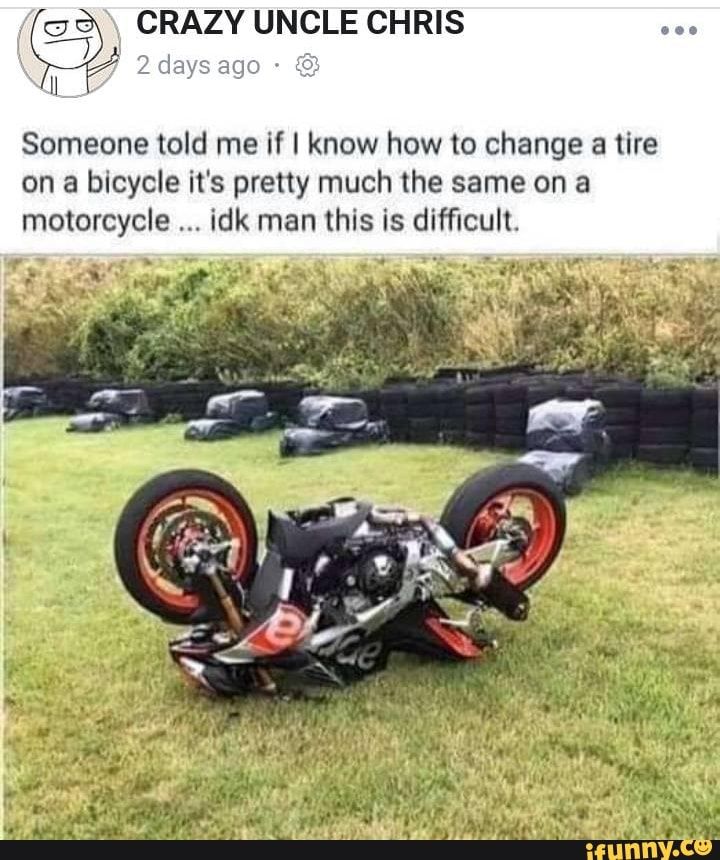
You will need a dedicated motorcycle tire bead breaker or tire iron to break the beads. If you don’t have access to these tools, you can try pushing down on the sidewall of the tire with your heel or use a heavy object to loosen up the beads.
Now that you have removed the beads from the rim, next comes the dreaded part, lifting the tires off the wheel. Lifting the tire of the rim can get a bit tricky, if you are working alone.
There are two ways to get the job done.
Tire wrenches are the most commonly used tool to lift the tire of the rim. It is important to note that you need to place a few rim protectors to avoid the risk of rims deforming. Not all rims need rim protectors, but you will need to use them if the wheel on your bike is made of soft metal alloy rims.
Rims made of soft metal alloys cannot bear intense pressure, so you need to be extra careful while working with them.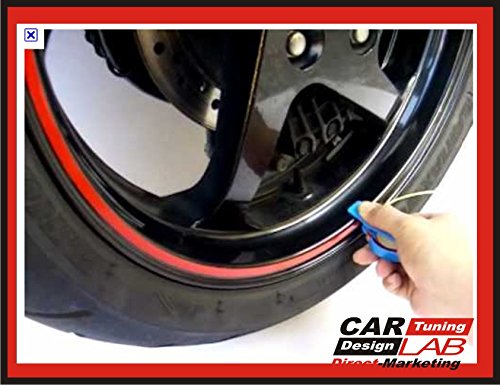 Place the rim protectors at the spots you intend to place the tire irons against the rim. Then spray a lot of tire fitting soap on to the tire to lubricate it and make your work easier.
Place the rim protectors at the spots you intend to place the tire irons against the rim. Then spray a lot of tire fitting soap on to the tire to lubricate it and make your work easier.
You would need at least two tire wrenches. Start by inserting a wrench between the tire and the rim at the location of the Schrader Valve.
Ensure that the wrench lifts a portion of the tire off the rim and slowly move it towards the centre. Insert the second wrench at a small distance from the first one and lift the tire off the rim.
Keep repeating the process until the tire is completely off the rim. Remove the tube from the tire (if it is a tubed tire)
This is the easiest method to get the tire off the rim, but you would need more muscle and a pack of heavy-duty zip ties more than 20 inches in length.
Once you have broken the tire beads, snake a zip tie between the tire’s bottom lip and the rim. Push the zip tie in until you can catch it from the other end.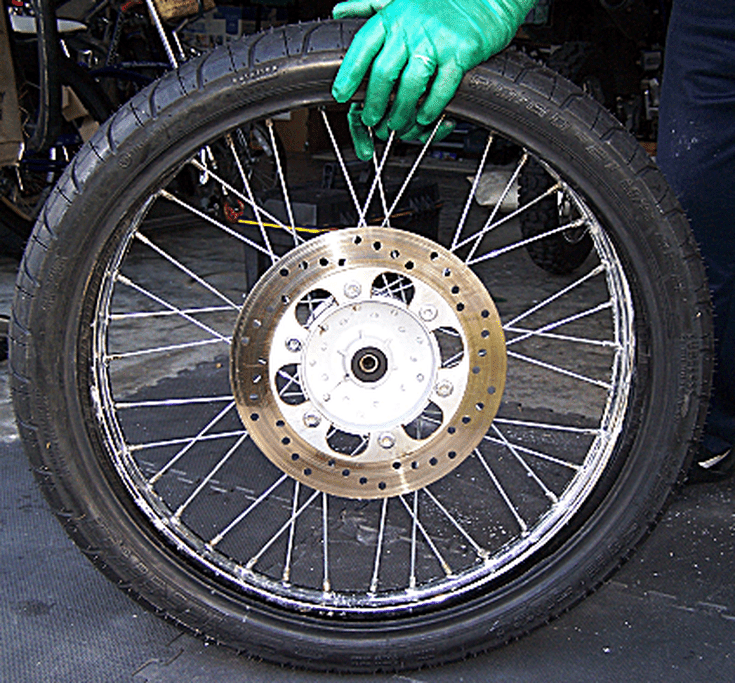 Tighten the zip tie until both sides of the tire’s sidewall are touching.
Tighten the zip tie until both sides of the tire’s sidewall are touching.
Slowly work your way forward until you can push the tire over the lip of the rim.
The same method can be used while refitting the tire. It’s just that you would first have to tighten the new tire using the zip ties and loosen it so that it fits on to the rim.
Here comes the final part, refitting the tires. Before you fix your tires look for the Direction of Rotation (DOR) marked on the tire and one or two small dots that represents the heavier side of the tire. Ensure that the heaviest side comes precisely opposite to the valve.
As said, you can use a tire wrench or zip ties to refit the tires.
Now that you have a basic understanding about replacing a motorcycle tire, here is the list of tools needed to get the job done.
Having the right tools for the job can help you save a lot of time & get the job done with perfection.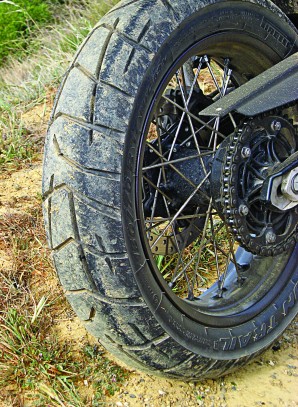 Get the best products from No-Mar Enterprises, your one-stop destination for tire changing tools and equipment.
Get the best products from No-Mar Enterprises, your one-stop destination for tire changing tools and equipment.
Replacing the tires can get tricky at times, but you can master it with practice. We hope that this article could help you better understand the different ways to change your motorcycle tires.
Common Tread Supreme Ruler Lance made one of his regular sojourns to ZLA headquarters in Philly from his lair in Ohio in early fall. Although he was up for the trip, his tires were not. His rear Dunlop had seen better days, so he took a little detour up the hill to Lemmy Mountain for some tire attention before making the ride home.
Our first order of business was to eat the doughnuts Lance brought, washing them down with coffee. If you’re swapping tires before 9 a.m., we recommend you do the same. (If it is after 9, please swill beer instead.)
For some reason, we don't always feel comfortable handing off our tire-changing jobs to the "professionals.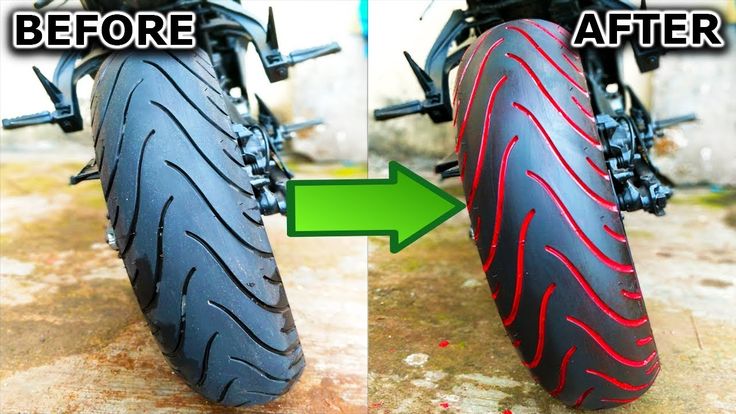 " Photo by Lance Oliver.Lance's editorial comment #1: Lemmy likes to dive right into a job, but I like to think about the meaning of it all. Such as why do I always change my own tires? There are a couple of good reasons. First, you can save money by buying your motorcycle tires from RevZilla at a good price, probably better than what your local shop charges. Plus, you'll save the fee for changing them. With shops charging $20 to $40 per wheel, the equipment you buy to do it yourself will pay for itself before long. The second reason is that you'll save yourself some time, and that's even more valuable to me than money. I can change my own tires faster than I can make an appointment, take the wheels off the bike, take them to the shop and wait for someone to do the work. I do it on my own schedule, when it's convenient for me.
" Photo by Lance Oliver.Lance's editorial comment #1: Lemmy likes to dive right into a job, but I like to think about the meaning of it all. Such as why do I always change my own tires? There are a couple of good reasons. First, you can save money by buying your motorcycle tires from RevZilla at a good price, probably better than what your local shop charges. Plus, you'll save the fee for changing them. With shops charging $20 to $40 per wheel, the equipment you buy to do it yourself will pay for itself before long. The second reason is that you'll save yourself some time, and that's even more valuable to me than money. I can change my own tires faster than I can make an appointment, take the wheels off the bike, take them to the shop and wait for someone to do the work. I do it on my own schedule, when it's convenient for me.
I should also specify that everything here is about changing tubeless tires. If Lemmy ever gets out and rides his neglected Honda XR650L enough to wear out the OEM tires, maybe I'll be able to get him to do a how-to on changing tube-type tires. Now I'll hand the mic back to Lemmy...
Now I'll hand the mic back to Lemmy...
Too many trips across Pennsylvania flat-spotted this rear tire. Before making the 475-mile trip home, Lance wanted a new one. We used jack stands to raise the bike. Photo by Lance Oliver.Our first task was to get the rear end of the bike up in the air. There’s lots of methods for lifting a scooter: bike jacks, ratchet straps to overhead rafters, centerstands, wheelstands, you name it. I’ve even changed tires with a bike frame up on a log before, and I’ve laid them on their sides as well. Be creative, but be careful. Lance set his bike up with a pair of swingarm spools at some point, so we just picked up the machine and put it on some plain old automotive jackstands. We did loosen the axle nut slightly while the bike was still solidly on the ground. No need to torque on it after it's raised.
Lance's editorial comment #2: I have the swingarm spools because at home in my own garage, I'd quickly and easily raise my Versys on my rear stand.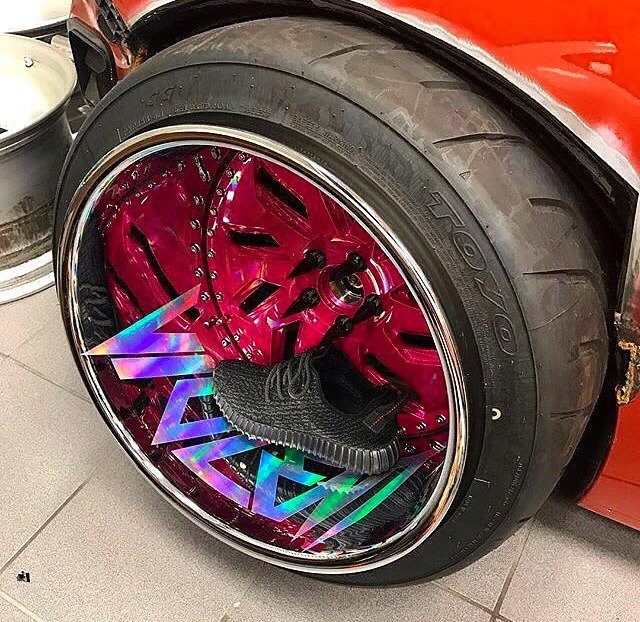 Since Lemmy only rides Shovelheads, choppers of muttly lineage and other odd junk, to which no one has ever fitted swingarm spools, he didn't have a rear stand. The jackstands worked just fine.
Since Lemmy only rides Shovelheads, choppers of muttly lineage and other odd junk, to which no one has ever fitted swingarm spools, he didn't have a rear stand. The jackstands worked just fine.
Next, we loosened the chain adjusters so we could slip the chain off the sprocket, and then slid out the axle. Keep track of the order of the axle hardware, especially wheel spacers. If you fail at this step, you have to put together a little jigsaw puzzle when you reassemble everything.
Lance's editorial comment #3: My tip: I like to put the spacers back on the axle in the proper order and put the nut on loosely. That keeps me from forgetting what goes where and misplacing any pieces. Plus, make a note of where the brake caliper mounting bracket fits into the scheme.
Lemmy uses a drift to coax out the axle. Photo by Lance Oliver.
Rather than let the brake caliper's weight dangle on the brake line, Lemmy suspends it using a bungee cord. Photo by Lance Oliver.Before sliding the axle out, I like to put a little chock of wood under the tire being removed to hold it up. Then I use a drift punch to drive the axle out of the wheel. If you’re doing a front wheel, the process is the same (don't forget to loosen the pinch bolts at the bottom of most fork legs), but you will probably have to remove both brake calipers to remove the wheel. Wire the calipers up out of the way. Don’t let them dangle by the brake hoses.
Photo by Lance Oliver.Before sliding the axle out, I like to put a little chock of wood under the tire being removed to hold it up. Then I use a drift punch to drive the axle out of the wheel. If you’re doing a front wheel, the process is the same (don't forget to loosen the pinch bolts at the bottom of most fork legs), but you will probably have to remove both brake calipers to remove the wheel. Wire the calipers up out of the way. Don’t let them dangle by the brake hoses.
If you’re so inclined, now is the time to check those wheel bearings. If they feel gritty, repack or replace ‘em! Don’t forget to check the brakes while you’ve got them off, as well.
Deflate the tire by removing the valve core with a valve core tool. After the air has made its exit, it's time to break the beads. There are a multitude of ways to do this, but we elected to use a manual bead breaker. It makes quick work of an otherwise-difficult job.
This bead breaker tool Lemmy has works well.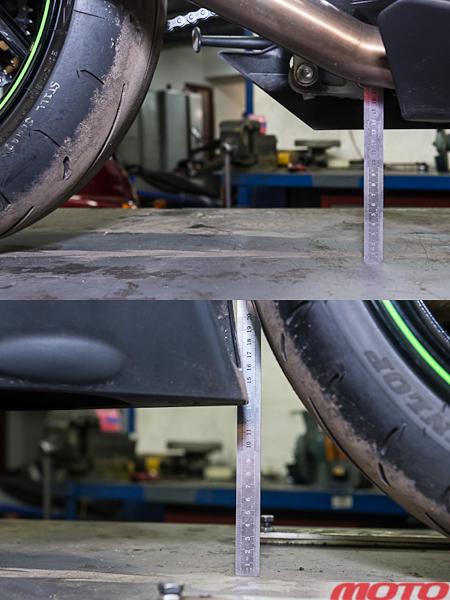 A variety of tools, from clamps to levers and wedges, are available for the job. Photo by Lance Oliver.
A variety of tools, from clamps to levers and wedges, are available for the job. Photo by Lance Oliver.
Lance's editorial comment #4: Breaking the bead can be the hardest part of the job, in some cases. The tool Lemmy has worked like a charm. At home, I have a Harbor Freight changing stand I bought years ago. It has its drawbacks and doesn't get much respect from tool aficionados, but it has a bead breaker that works well, and that alone makes it worth its cost, to me. There are some other nifty tools that don't cost a fortune.
After the beads are broken on both sides, it's time to begin pulling the tire off the wheel. This part of the job is more of an art than a science. Everyone seems to find their own way of doing things. I like to work on old squares of carpet to keep from beating the tar out of the finish on the wheels.
Lemmy gets down there with the wheel, like an old-style wrassler. Photo by Lance Oliver.
Lance's editorial comment #5: Although it was mildly alarming to watch Lemmy battling my wheel and tire on his knees like an Everglades 'gator wrestler, I have to admit his methods got the job done.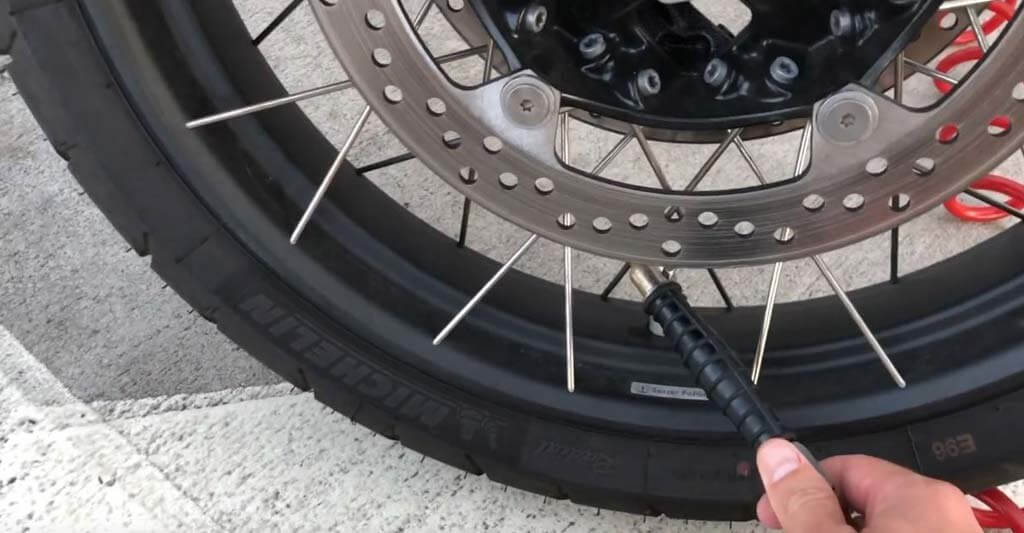 Personally, my knees have a lot more miles on them than Lemmy's and I prefer to work standing up. Plus, having the wheel clamped to a stand makes it easier to avoid the possibility of putting pressure on a brake rotor. If you do use the Lemmy method, keep the rotor side up to avoid leaning on it.
Personally, my knees have a lot more miles on them than Lemmy's and I prefer to work standing up. Plus, having the wheel clamped to a stand makes it easier to avoid the possibility of putting pressure on a brake rotor. If you do use the Lemmy method, keep the rotor side up to avoid leaning on it.
There are ways to make your own tire-changing stand, if you're lacking funds to buy one. I've seen some good homemade tire-changing setups created with a few dollars of materials: A discarded car wheel with a section of old garden hose sliced lengthwise and put on the wheel's rim for rubber protection, and a threaded rod in the center to clamp your motorcycle wheel to the car wheel. My store-bought tire-changing stand is another option. If you're ready to pay more, I've seen people change tires in a flash without breaking a sweat using one of those fancy (and pricey) No-Mar changers.
The job will go easier with the right tools. Use tire lube. They make this stuff for a reason — it works! It helps with de-mounts as well as mounting, and protects the bead from rips or tears from the tire irons.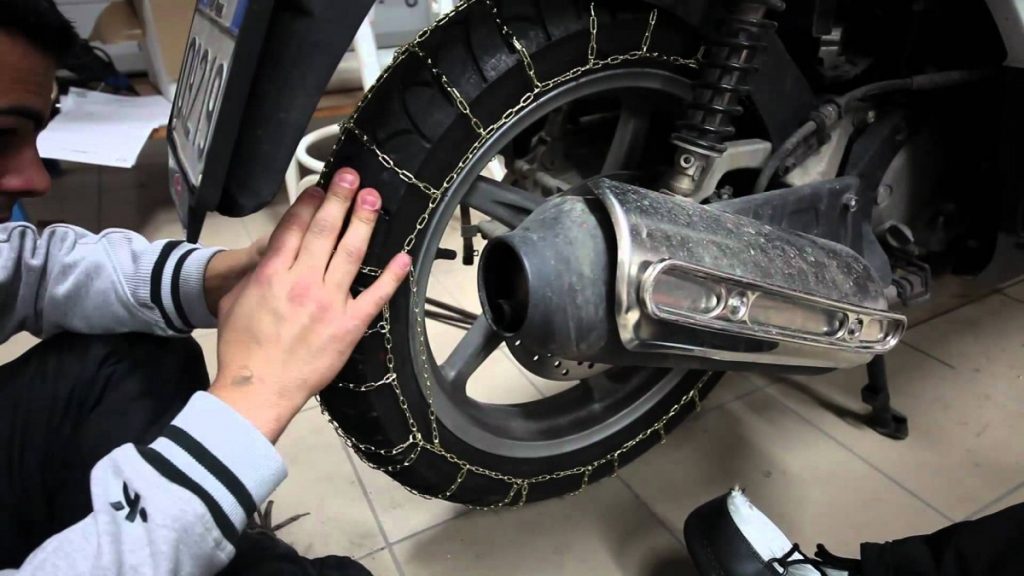
Use dedicated tire spoons. I’m not going to kid you and say I’ve never fudged it with the wrong tool, but I’ve also ruined some wheels half-assing the job alongside the road in the middle of East Jabip. Rim protectors are a great idea if you want to keep your wheels looking good. If you think I’m just pitching stuff we sell, let me dispel that notion: You can easily cut up old milk jugs, or you can use College Lemmy’s impromptu rim-saver: heater hose scraps filched from the auto parts joint.
Removing the tire is prolly the trickiest step. Use the spoons, take your time, and as Lance kept reminding me, “Take small bites!” He’s got a great point. I have a habit of getting greedy. I try to de-mount the whole dang tire at once, and it never works. It bends the spoons, makes my arms sore, and puts the delicate beads at risk. Work smart, not hard. Do little sections of bead at a time and don't forget the tire lube.
With one bead off the wheel, it's easy to see the drop-center and understand how it makes this whole process possible. Photo by Lance Oliver.Here's the most important thing to remember. The act of levering the bead over the rim lip only can happen if the bead is in the “drop-center” on the opposite side of the tire. The drop-center is the shallow channel that runs the circumference of the wheel at the center and it makes the whole process possible. If you're having to use excessive force and still can't get the bead of the tire over the lip of the rim, your problem is that the tire bead is not in the drop-center.
Photo by Lance Oliver.Here's the most important thing to remember. The act of levering the bead over the rim lip only can happen if the bead is in the “drop-center” on the opposite side of the tire. The drop-center is the shallow channel that runs the circumference of the wheel at the center and it makes the whole process possible. If you're having to use excessive force and still can't get the bead of the tire over the lip of the rim, your problem is that the tire bead is not in the drop-center.
It can be difficult because the tire doesn't want to stay in the drop-center. I typically kneel on the tire to keep it where I want it. At this point, after a few bad words, you should have one bead free of the tire. Repeat the process on the other bead, but the same side of the wheel.
Lance's editorial comment #6: I find that having a couple of different shapes of tire irons makes the job much easier. I have one long iron with a nice bend in it that's almost indispensable for that first grip on the second bead, which is harder to access than the first.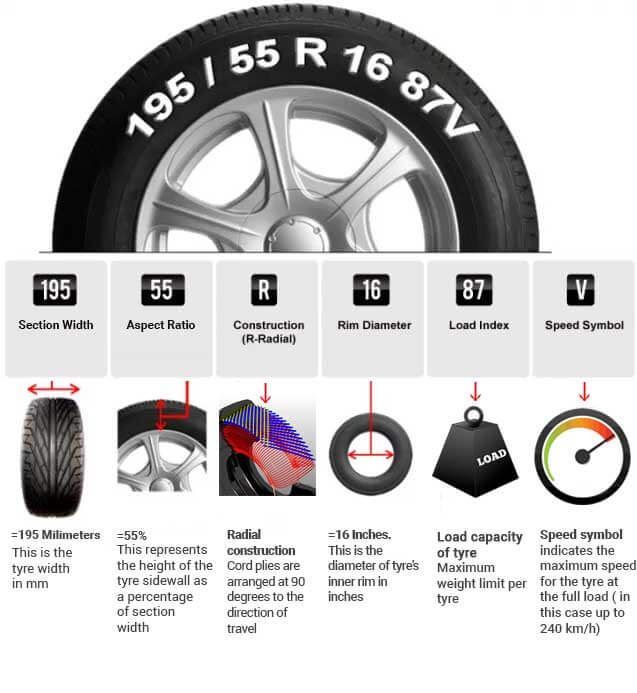
With the tire off, I give the wheel a visual inspection, and then replace the valve stem. You can either pull the old one out with a tool or just cut it out. Lance didn't have a replacement valve stem ready, so we reused the same one. You can do that, but replacing it is cheap protection.
Almost done. Rim protectors keep wheels from getting marred by tire irons. Photo by Lance Oliver.Using the directional arrows on the sidewall, check and double-check the direction of the new tire relative to the wheel. Nothing is worse than mounting it backwards and having to do the job twice. Be generous with the lube and slather the new tire’s beads. Installation of the new tire is much the same as removing the old one. Again, “take small bites” and be sure the opposite bead is in the drop-center of the wheel. If there's a small dot of paint on the sidewall, that's the balancing mark. Line it up with the heaviest part of the wheel, typically where the valve stem bolts in (see balancing section below).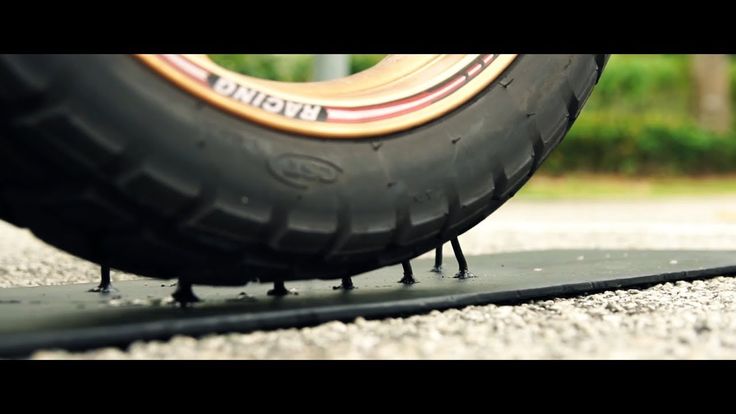
Once the tire is mounted onto the wheel, you need to seat the beads. Remove the valve core from the new stem so you can inflate it faster. A large air compressor will have enough oomph! to blow the beads of most tires onto the wheel, but there are always kludgy exceptions. If your compressor’s not doing the job, there are a number of redneck ways to make the tire assume its new home. I’m not going to claim that I’ve never used ether to blow a bead onto a wheel, but I sure am not recommending anyone else do it. Bead seating tools (also known as Cheetahs) are much less dangerous. Watch your fingers during this step! I have pinched the ever-livin’ bejesus out of myself by getting my finger too close to a bead that was about to seat.
Lance's editorial comment #7: Lube is again your friend when trying to seat the beads. It encourages the bead to slide into its home and, because it is liquid, it will create tell-tale bubbles to show you where air is escaping, instead of inflating your tire.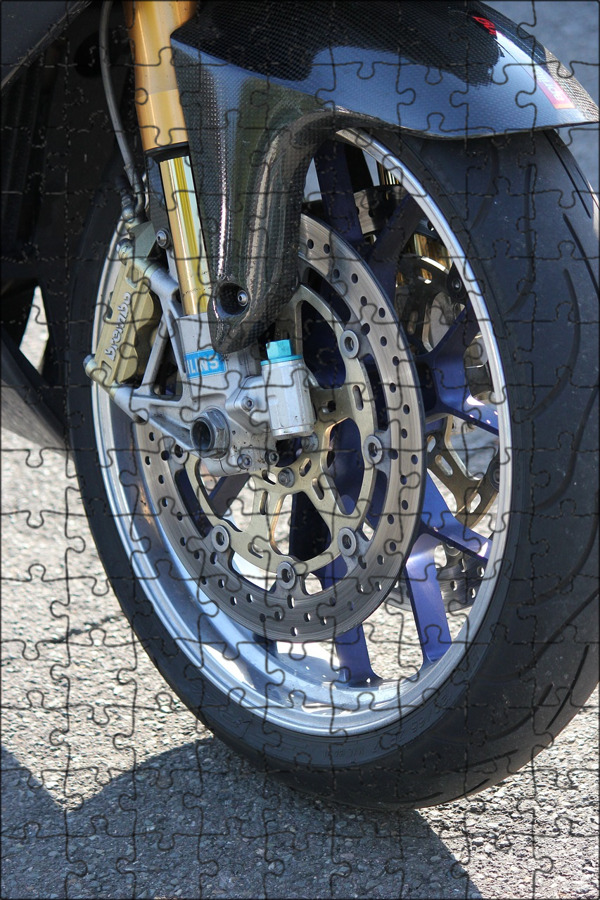 Sometimes pressing on the tread next to the spot where air is escaping past the bead will be enough to get that satisfying and loud "pop!" you're seeking.
Sometimes pressing on the tread next to the spot where air is escaping past the bead will be enough to get that satisfying and loud "pop!" you're seeking.
With the bead set, replace the valve core and adjust the inflation to the correct pressure. If you are the balancing kind of fellow, now is the time to do so. (Lance and I have similar views on balancing tires. We don’t.) Please don’t leave murderous comments about balancing. I encourage everyone to do what they feel is best with regard to tire balancing.
Lance's editorial comment #8: Uh, actually I've been known to balance tires, especially front ones and especially on a bike I'm going to take to the track and ride at higher speeds, where a vibration can show up that I never felt at street speeds.
Static balancing isn't hard. One of these balancing stands (or a homemade alternative), some stick-on wheel weights and some patience are all you need. The good news is that quality control keeps getting better, and more often these days I find tires need little or no weights to be in balance. You can also use your balancing stand on your wheel alone to determine if the valve stem area really is the heaviest spot on the wheel. That lets you know where to line up the balancing spot on the tire.
With the chain back on the sprocket and the spacers and brake caliper bracket lined up in place, it's time to slide in the axle. Photo by Lance Oliver.
Lemmy's editorial comment #1: This guy sure has a lot of advice to dole out for a guy with clean hands, doesn't he?
At this stage of the game, you ought to be ready to reinstall your wheel. I put that chock of wood back in place to hold the wheel up. Reinstall your caliper (or brake assembly, if your bike has a drum brake), get all your spacers lined up in the right spots and slide the axle back in. Leave the axle nut slightly loose while you adjust the tension on the chain. Snug everything up, check the chain tension again (the chain on Lance's Versys gets tighter when you torque that axle nut), check to make sure the rear wheel is straight by sighting down the chain, lubricate the chain, put a new cotter pin in the castellated axle nut, and go ride! (Carefully, of course, so you can scrub in that new tire and make sure you have everything snugged down right.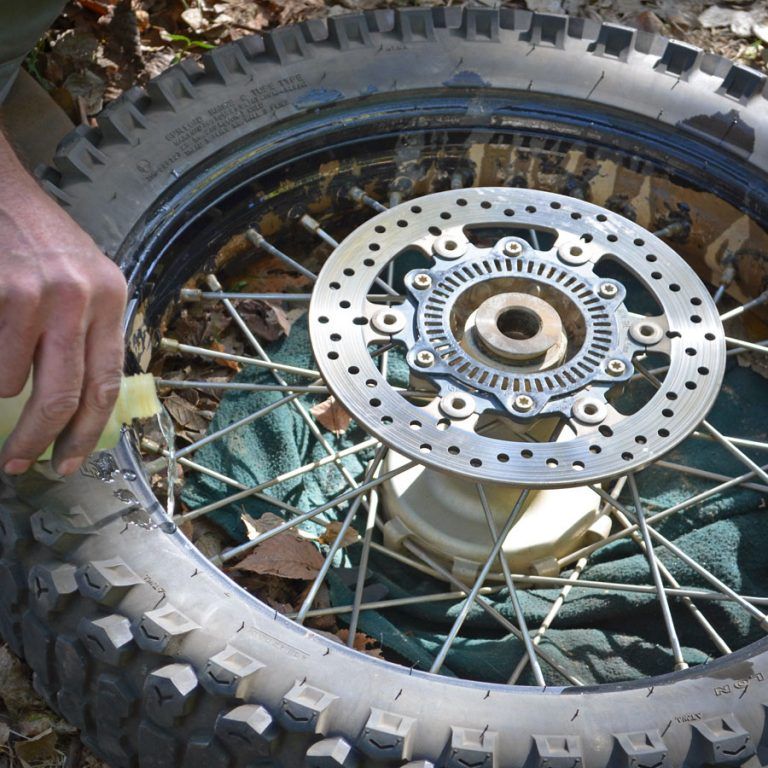 And don't forget to pump up the brakes before you ride.)
And don't forget to pump up the brakes before you ride.)
As a parting thought, keep your head about you if this is the first time you’re changin' tars. Even thousands of tires later, these things still get me riled up. Beads don’t seat, tires won’t get onto their rims. It's always something. Patient and methodical work gets the job done, so don't get discouraged!
Tires are the only thing that connects a motorcycle to the road. Handling, dynamics, comfort, motorcycle cross-country ability ... and the safety of the driver himself depend on their design and condition. And his concern is to monitor the health of tires and be able to repair them, often in the field.
THREE SIDES OF THE ONE MEDAL. Any tire is a more or less successful attempt to combine the incompatible. Or, in other words, the conscious deterioration of some tire properties for the benefit of others.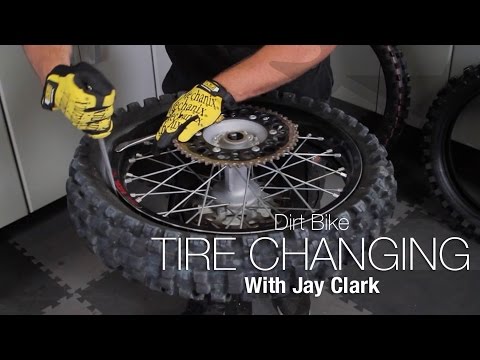 This is precisely the difficulty for designers when creating a tire. This is also the difficulty of choice for the consumer. Here are the three main properties that a road tire should have.
This is precisely the difficulty for designers when creating a tire. This is also the difficulty of choice for the consumer. Here are the three main properties that a road tire should have.
The first is to ensure reliable traction. On asphalt, soft rubber has the best grip (which is especially important in corners). But it quickly wears out, losing its properties. Moreover, tires with a soft compound are very demanding on their own temperature and seriously lose in a cold state.
The second (for the rear wheel) is to realize a large moment. It is because of this that the rear tires on modern motorcycles are at least thirty percent wider than, say, motorcycles twenty years ago. But again there was a minus - due to the increased width, the maneuverability of the motorcycle worsened.
The third (more for the front wheel) is informative. The tire should “inform” the driver about the state of the roadway, which is especially important for those who like to drive fast.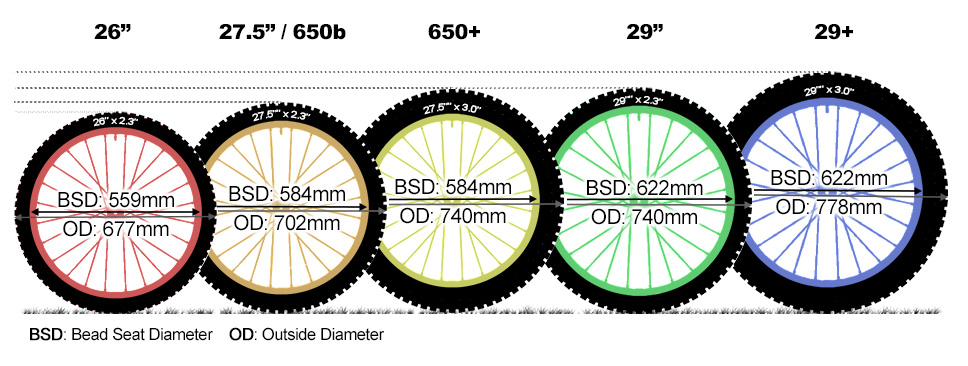 The disadvantages of "detailed information" are an excess of vibrations transmitted from the road and discomfort. The choice of a specific tire for a particular motorcycle depends on many factors - the rider's riding style, his skills, and finally, the budget. Practice shows that the more experienced and skillful the driver is, the less attention he pays to a specific brand (all world-famous manufacturers mainly offer products of a similar level) and more to the condition of the tire and the pressure in it. Of course, if you are the owner of a sportbike, you should not install purely tourist tires on it, but sports pseudo-slicks for driving on wet city streets are not suitable either.
The disadvantages of "detailed information" are an excess of vibrations transmitted from the road and discomfort. The choice of a specific tire for a particular motorcycle depends on many factors - the rider's riding style, his skills, and finally, the budget. Practice shows that the more experienced and skillful the driver is, the less attention he pays to a specific brand (all world-famous manufacturers mainly offer products of a similar level) and more to the condition of the tire and the pressure in it. Of course, if you are the owner of a sportbike, you should not install purely tourist tires on it, but sports pseudo-slicks for driving on wet city streets are not suitable either.
MOTORCYCLE TIRE CONSTRUCTION. By design, motorcycle tires are radial and diagonal. Radial tires are marked with the letter "R" (for example, 180/55 R17), diagonal tires with a "-" sign (100/90 - 19), and diagonal tires with a stiffening belt with the letter "B" (150/70 B17).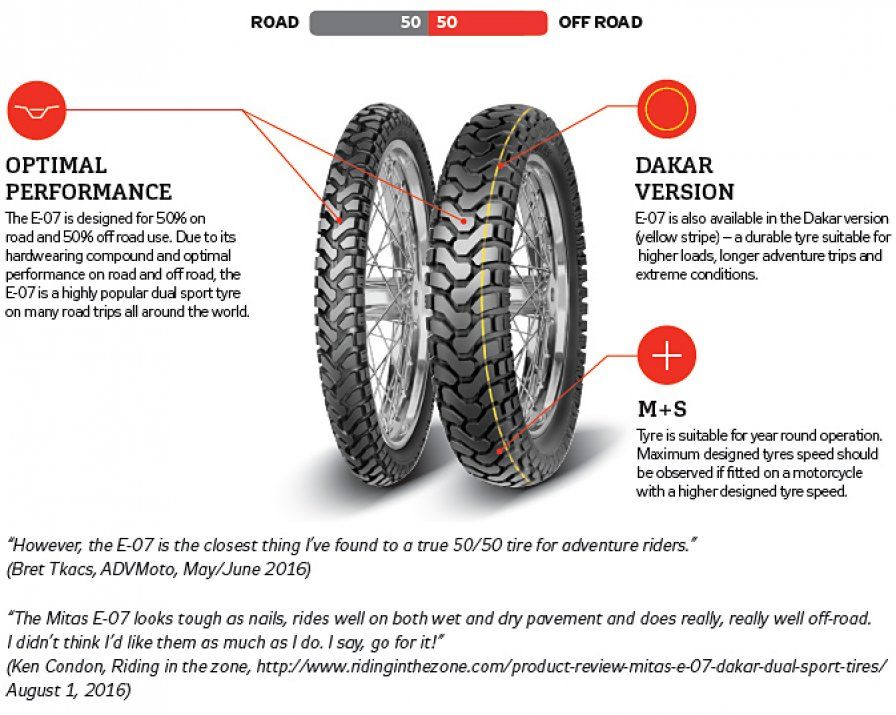
On road and sports motorcycles, radial (RADIAL TYPE) tires are mainly used. They are the most resistant to deformations that occur at high speeds and loads, provide a more regular contact patch and lower internal rolling losses. The carcass threads of a radial tire are located in planes passing through the axis of rotation of the wheel and, accordingly, do not cross. Above the frame is a strong, usually multi-layer breaker with a base of steel or synthetic threads, which perceives and distributes loads. A radial tire has less internal friction, hence less heat.
Bias (BIAS TYPE) tires are much simpler and therefore cheaper to manufacture than radial tires. They are more durable on bad roads, but heavier and have greater internal friction losses compared to radial ones. "Diagonals" have proven themselves well on enduro and motocross bikes.
In a diagonal tire, the carcass threads are at an angle to the direction of travel and cross, in contrast to a radial tire. The number of plies in a carcass is often indicated on the tire label (usually 2 to 6). The larger it is, the more load the tire can withstand. There are also BIAS-BELTED tires. They have an additional reinforcing belt on top of the carcass, just like radial tires.
The number of plies in a carcass is often indicated on the tire label (usually 2 to 6). The larger it is, the more load the tire can withstand. There are also BIAS-BELTED tires. They have an additional reinforcing belt on top of the carcass, just like radial tires.
The first two digits in the oval indicate the week, the last two indicate the year the tire was manufactured.
The first two digits in the oval indicate the week, the last two indicate the year the tire was manufactured.
TIRE FIT AND DIMENSIONS. It is believed that rubber stored for more than a year loses its hermetic properties. In fact, this layer is not. Thomas Bischoff, Market Development Manager for Eastern Europe at Metzeler, explained that in the past, rubber did crack quite quickly when exposed to sunlight. But for more than twenty years, thanks to special additives, the tire can be stored without loss of properties for at least five years. Even on the street. The only type of tires that this does not apply to are racing slicks. It is believed that they do not stand on a motorcycle for a long time, and there is no sunlight in the warehouse. Therefore, “extra” components are not added to their compound.
Even on the street. The only type of tires that this does not apply to are racing slicks. It is believed that they do not stand on a motorcycle for a long time, and there is no sunlight in the warehouse. Therefore, “extra” components are not added to their compound.
Each tire has tread wear indicators. As a rule, these are visible “bulges” (bridges) in the tread grooves. On the sidewall opposite these indicators are the letters TWI (Tread Wear Indicator). If the indicator has begun to wear out at least in one place, the tire must be replaced immediately. Without regret!
Each tire has tread wear indicators. As a rule, these are visible “bulges” (bridges) in the tread grooves. On the sidewall opposite these indicators are the letters TWI (Tread Wear Indicator). If the indicator has begun to wear out at least in one place, the tire must be replaced immediately. Without regret!
HOW MUCH TO DOWNLOAD? On any production motorcycle you will find a plate that will indicate the pressure when driving alone and with a passenger. In everyday life, you can safely follow these instructions. But in some cases, recommendations will have to be deviated from. First of all, this applies to multifunctional motorcycles - enduro. Typically, indications on them refer to road tires. When replacing tires with off-road tires, the pressure is usually lowered. As a rule, it should not exceed 1.8–2 atm (for light enduro there are hard tires in which it is recommended to maintain 1 atm). Off-road tires with a pressure above 2 atm behave disgustingly both on asphalt and on a country road! But on them you can carefully get to the place of repair and in case of a puncture - if the tire does not turn on the rim.
In everyday life, you can safely follow these instructions. But in some cases, recommendations will have to be deviated from. First of all, this applies to multifunctional motorcycles - enduro. Typically, indications on them refer to road tires. When replacing tires with off-road tires, the pressure is usually lowered. As a rule, it should not exceed 1.8–2 atm (for light enduro there are hard tires in which it is recommended to maintain 1 atm). Off-road tires with a pressure above 2 atm behave disgustingly both on asphalt and on a country road! But on them you can carefully get to the place of repair and in case of a puncture - if the tire does not turn on the rim.
When using sports bikes on the track, the pressure must also be reduced. A "stove" for light vehicles can be considered 2.0 atm in the front and 1.8 atm in the rear wheel. Reducing the pressure allows you to increase the contact patch of the tire with the road, which is especially important in corners. And don't forget to inflate the wheel after training on the track! Driving with low pressure on the motorway will lead to increased tire wear and may be unsafe (after all, the tire heats up on the track, due to which the pressure still rises). When traveling on a loaded road bike, to increase the life of the rear tire, the pressure in it can be increased to 3 atm. But don't do this if your route is through winding mountain roads or if you are traveling in cold weather.
When traveling on a loaded road bike, to increase the life of the rear tire, the pressure in it can be increased to 3 atm. But don't do this if your route is through winding mountain roads or if you are traveling in cold weather.
Replace tires that are unevenly worn from long freeway driving. Tires that are flat in the middle and virgin along the edges behave very insidiously in turns and on uneven roads (especially in ruts and on longitudinal sections of asphalt), and in the rain they generally cease to hold.
Replace tires that are unevenly worn from long freeway driving. Tires that are flat in the middle and virgin along the edges behave very insidiously in turns and on uneven roads (especially in ruts and on longitudinal sections of asphalt), and in the rain they generally cease to hold.
REPAIRING A TUBELESS TIRE. Flat tire. If this happened while driving at high speed on the highway, you will not notice that the pressure has dropped. Centrifugal force at speeds over 160 km/h will prevent the tire from being pressed to the rim. (On the other hand, the same force can release air from the wheel by “squeezing” the valve of the nipple inward. Make sure that the cap with a sealing rubber gasket is always screwed on the nipple!) Trouble will show up at the most inopportune moment - during braking. Most often, the culprit of a puncture - a nail, a screw, or a piece of glass - gets stuck in the tire. If you do not have a special kit for repairing tubeless tires with you, it's bad, but do not rush to remove the self-tapping screw from the wheel. All is not yet lost. You can try to ask a good car enthusiast for a pump, pump up the wheel to the maximum pressure and rush to the nearest tire service. (You need to find out about his whereabouts before you start pumping a leaky tire, because you will have no more than seven minutes on the road.) Focus failed? We call a tow truck.
Centrifugal force at speeds over 160 km/h will prevent the tire from being pressed to the rim. (On the other hand, the same force can release air from the wheel by “squeezing” the valve of the nipple inward. Make sure that the cap with a sealing rubber gasket is always screwed on the nipple!) Trouble will show up at the most inopportune moment - during braking. Most often, the culprit of a puncture - a nail, a screw, or a piece of glass - gets stuck in the tire. If you do not have a special kit for repairing tubeless tires with you, it's bad, but do not rush to remove the self-tapping screw from the wheel. All is not yet lost. You can try to ask a good car enthusiast for a pump, pump up the wheel to the maximum pressure and rush to the nearest tire service. (You need to find out about his whereabouts before you start pumping a leaky tire, because you will have no more than seven minutes on the road.) Focus failed? We call a tow truck.
Tubeless tire repair kit.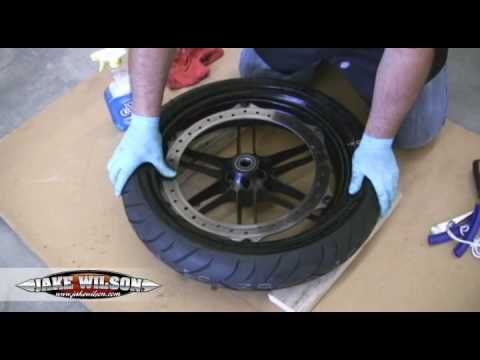
Tubeless tire repair kit.
If you did not hope for a chance and stocked up on a repair kit, there is a chance to leave on your own.
Carefully remove the self-tapping screw (nail, glass) from the hole. We take a special hook from the set - a needle file and insert it through the hole into the tire cavity. We process the inner surface of the hole with reciprocating movements. We don't get carried away! The tool should pass into the hole with a slight but perceptible resistance. Squeeze out the glue from the kit into the hole.
Carefully remove the self-tapping screw (nail, glass) from the hole. We take a special hook from the set - a needle file and insert it through the hole into the tire cavity. We process the inner surface of the hole with reciprocating movements. We don't get carried away! The tool should pass into the hole with a slight but perceptible resistance. Squeeze out the glue from the kit into the hole.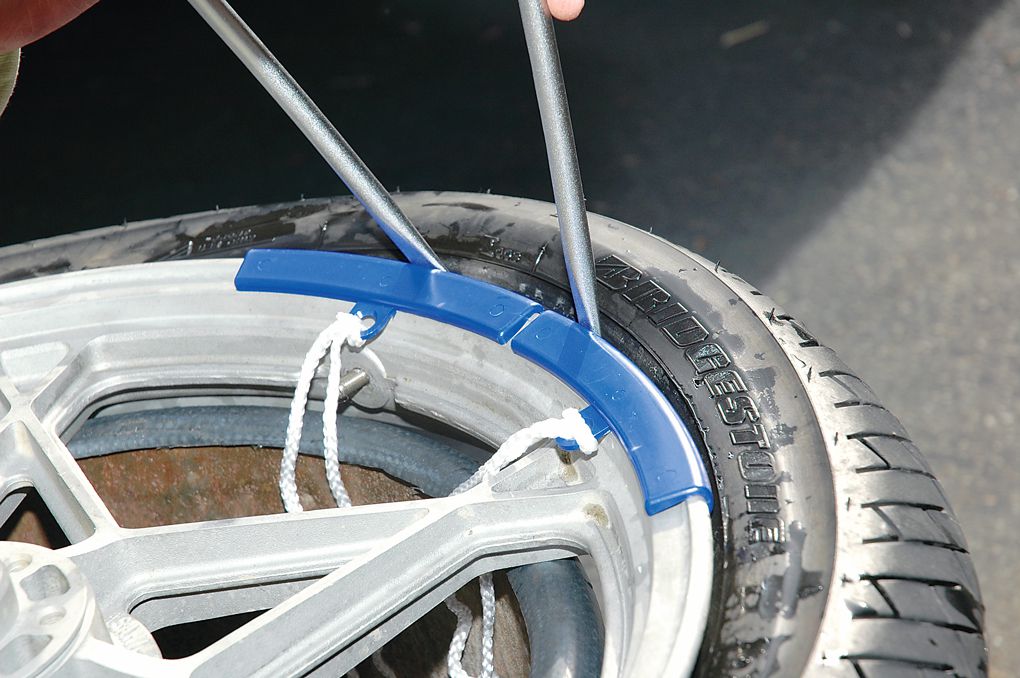
We take a rubber band (they are both round and in the form of a figure eight), also coat it with glue, hook it onto the hook of a universal tool and insert it into the hole with a confident movement.
We take a rubber band (they are both round and in the form of a figure eight), also coat it with glue, hook it onto the hook of a universal tool and insert it into the hole with a confident movement.
The further process is a real art, the culmination of the whole action, and each master performs it in his own way. Someone pulls smoothly, gently swaying, someone drags boldly and sharply. The point is to remove the tool from the hole so that the inserted tourniquet remains inside. A few crampon workouts in the garage will help a lot, and on the road you will effortlessly handle repairs.
The further process is a real art, the culmination of the whole action, and each master performs it in his own way.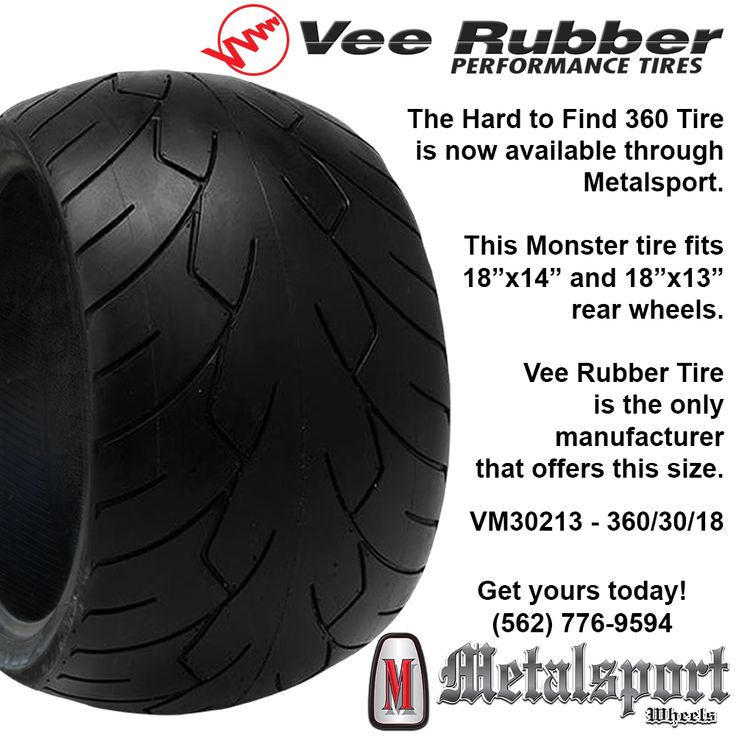 Someone pulls smoothly, gently swaying, someone drags boldly and sharply. The point is to remove the tool from the hole so that the inserted tourniquet remains inside. A few crampon workouts in the garage will help a lot, and on the road you will effortlessly handle repairs.
Someone pulls smoothly, gently swaying, someone drags boldly and sharply. The point is to remove the tool from the hole so that the inserted tourniquet remains inside. A few crampon workouts in the garage will help a lot, and on the road you will effortlessly handle repairs.
After removing the tool, cut off the sticking out residue of the flagellum.
After removing the instrument, cut off the protruding remnant of the flagellum.
Now it remains to inflate the wheel from cylinders with compressed gas. You need to carry at least two of them, since one is not enough for the rear wheel. Remember, when inflating a tire, the balloon cools down - do not touch it with bare hands. In Europe, it is generally accepted that a repair with a flagellum does not give a 100% guarantee, since under the action of centrifugal force at high speeds, the flagellum can leave the tire. And despite the fact that I have not seen this in practice, I advise everyone to listen to the opinion of European colleagues.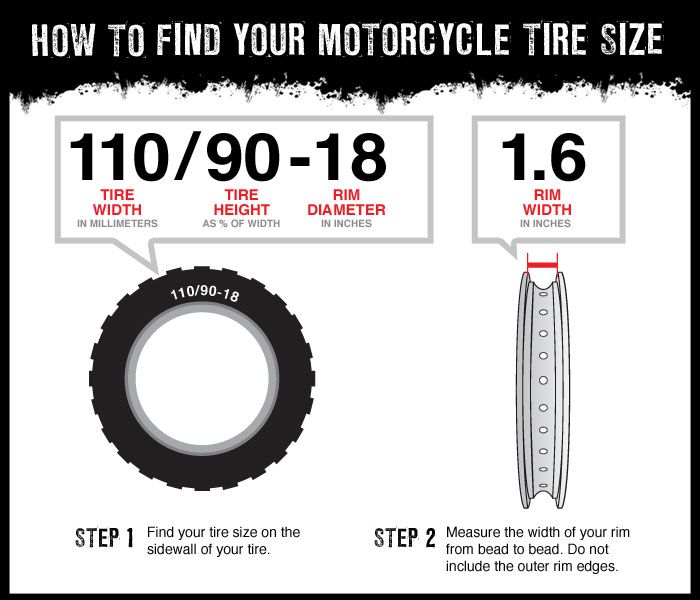 Look into the service and ask to change the tourniquet for a more securely fixed “fungus” or patch from the inside of the tire. But it is useless to repair a puncture with a diameter of more than 5 mm either in the side part of the tire, or a “hernia”. It's a shame, you will have to part with such a tire.
Look into the service and ask to change the tourniquet for a more securely fixed “fungus” or patch from the inside of the tire. But it is useless to repair a puncture with a diameter of more than 5 mm either in the side part of the tire, or a “hernia”. It's a shame, you will have to part with such a tire.
HOW TO BALANCE? When picking up a motorcycle from a tire shop, it is worth checking the work of the master. First of all, make sure that the arrow drawn on the side of the tire corresponds to the direction of rotation of the wheel. At the same time, the type and shape of the tread should not confuse you in any way. It is also important that the marking of the lightest part of the tire (usually a bright circle painted on the sidewall of the tire) is near the valve. Otherwise, the wheel will have to be weighted with additional balancing weights that spoil the look of the motorcycle.
Too many motorcyclists torment tire workers in an effort to achieve perfect dynamic wheel balance.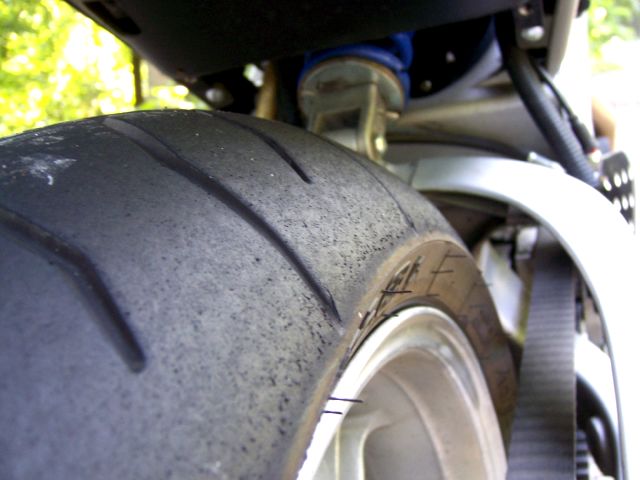 In vain! First of all, the width of the motorcycle rim (even the rear one) is relatively small, as is the possible dynamic imbalance. Moreover, it has been experimentally verified that a motorcyclist cannot feel a weight less than 50 g on the rear and 25 g on the front wheel. That is why, in many motorcycle factories, regular weights are attached to the middle of the rim, and not to the rim, like in cars. Moreover, even in world-class competitions such as WSBK, tires are manually balanced by rotating the wheel in special cones and gluing a weight against the rim that is below. An imbalance of 10–15 g can be considered normal and the balancing should be stopped at this point.
In vain! First of all, the width of the motorcycle rim (even the rear one) is relatively small, as is the possible dynamic imbalance. Moreover, it has been experimentally verified that a motorcyclist cannot feel a weight less than 50 g on the rear and 25 g on the front wheel. That is why, in many motorcycle factories, regular weights are attached to the middle of the rim, and not to the rim, like in cars. Moreover, even in world-class competitions such as WSBK, tires are manually balanced by rotating the wheel in special cones and gluing a weight against the rim that is below. An imbalance of 10–15 g can be considered normal and the balancing should be stopped at this point.
REPAIRING A TUBE TIRE. A tire puncture should not embarrass a true endurist. After all, he has with him everything necessary "for autonomous navigation", including the tool needed to remove the wheel and tire fitting, as well as strength, dexterity and experience. In the absence of the latter, this article will be of help.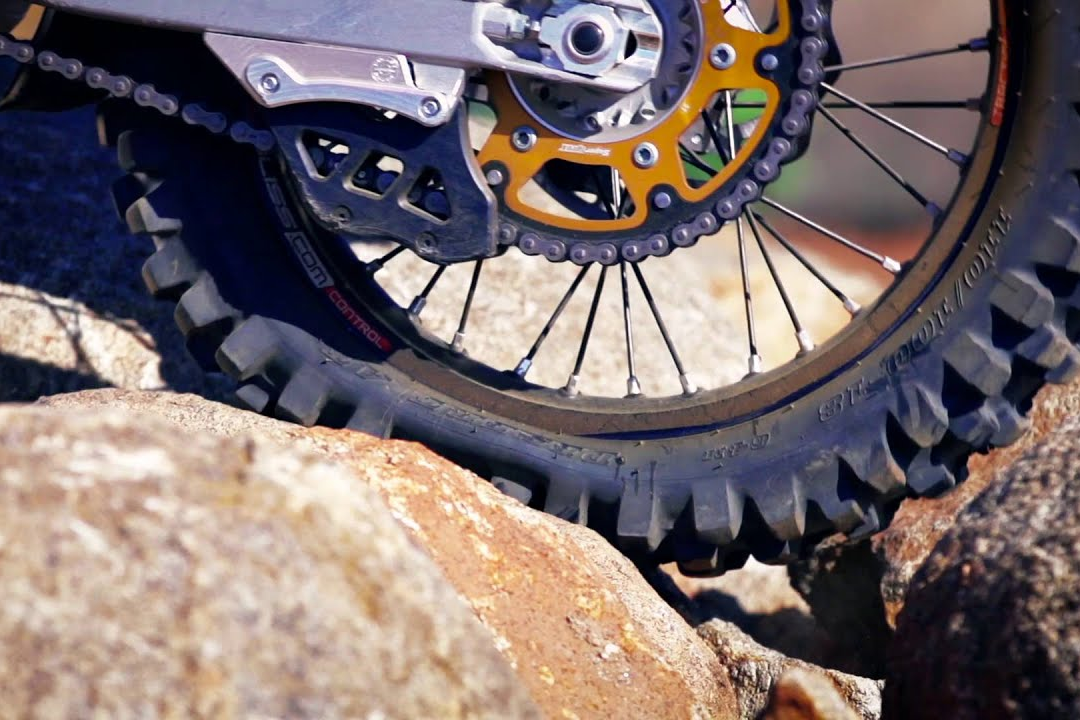 In addition to the tool, you will need a spare chamber (if you take one, it is better to take the front one - it can also be used in the rear wheel, but the opposite will not work) and a pump. On a long trip, it is better to take patches and glue, and now special patches are sold that are designed for a long service life (cut out from the chamber are considered temporary, that is, not very reliable, especially at high loads and temperatures). There are also special cans for tire repair, including tube ones, on sale. Their advantage is that they seal the damage and inflate the tire at the same time. Cons - "disposability", the inability to repair a large puncture and the price. Sometimes you can do without tire fitting by pouring water into the chamber (50-100 ml is enough). With luck, you can drive this way for several hours. And if a rigid diagonal tire is installed on the rear wheel, then on a flat road it allows you to move with a puncture, especially for one driver on a light motorcycle.
In addition to the tool, you will need a spare chamber (if you take one, it is better to take the front one - it can also be used in the rear wheel, but the opposite will not work) and a pump. On a long trip, it is better to take patches and glue, and now special patches are sold that are designed for a long service life (cut out from the chamber are considered temporary, that is, not very reliable, especially at high loads and temperatures). There are also special cans for tire repair, including tube ones, on sale. Their advantage is that they seal the damage and inflate the tire at the same time. Cons - "disposability", the inability to repair a large puncture and the price. Sometimes you can do without tire fitting by pouring water into the chamber (50-100 ml is enough). With luck, you can drive this way for several hours. And if a rigid diagonal tire is installed on the rear wheel, then on a flat road it allows you to move with a puncture, especially for one driver on a light motorcycle. You just need to balance the speed with the heating of the tire - otherwise it can exfoliate from overheating. Such a trick will not work from the front - the motorcycle will be uncontrollable.
You just need to balance the speed with the heating of the tire - otherwise it can exfoliate from overheating. Such a trick will not work from the front - the motorcycle will be uncontrollable.
It is very important to have the right mounts - not too long, "hooky", but also without sharp edges. Experienced travelers sometimes make their own mounts from wrenches for axle nuts.
It is very important to have the right mounts - not too long, "hooky", but also without sharp edges. Experienced travelers sometimes make their own mounts from wrenches for axle nuts.
To remove the rear wheel, we need a wrench for the rear axle nut; the second key (to hold the axis) is usually not needed. Sometimes the nut sticks to the thread or is simply tightened with a long wrench, and it cannot be touched with a frail regular tool. When tightening the axle, do not overdo it - a torque of 8–10 kgcm is sufficient.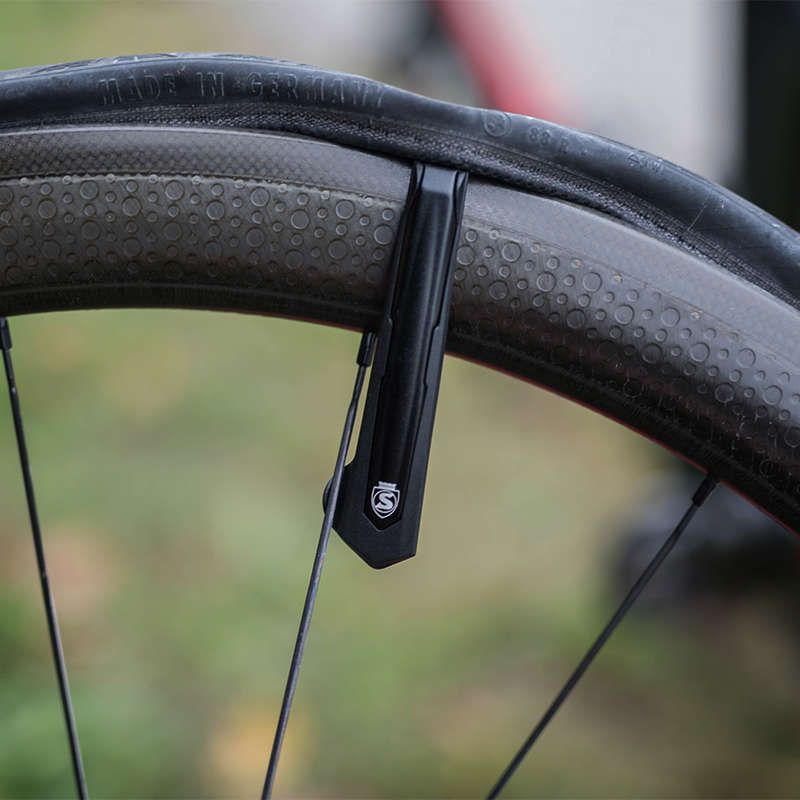 By dragging, instead of getting a reliable connection, you will simply ruin both parts. To remove the rear wheel on an off-road motorcycle, it is not necessary to loosen the chain, but it is still good to have keys with you to tension it (on some motorcycles, the chain is tensioned by a “snail” that does not require keys). When collecting a set of tools for the road, try in the garage to do the procedures for which you take them. After all, in an open field (or a dirty swamp) there is nowhere to wait for help!
By dragging, instead of getting a reliable connection, you will simply ruin both parts. To remove the rear wheel on an off-road motorcycle, it is not necessary to loosen the chain, but it is still good to have keys with you to tension it (on some motorcycles, the chain is tensioned by a “snail” that does not require keys). When collecting a set of tools for the road, try in the garage to do the procedures for which you take them. After all, in an open field (or a dirty swamp) there is nowhere to wait for help!
Remember to loosen the pinch screws on one of the fork legs before removing the front axle. On some motorcycles (where there are two brake discs) you will also have to unscrew the brake calipers, otherwise the wheel cannot be removed. It is advisable to place a set of tools not on the ground, but on a spread cloth.
Be sure to loosen the pinch screws on one of the fork legs before removing the front wheel axle. On some motorcycles (where there are two brake discs) you will also have to unscrew the brake calipers, otherwise the wheel cannot be removed. It is advisable to place a set of tools not on the ground, but on a spread cloth.
On some motorcycles (where there are two brake discs) you will also have to unscrew the brake calipers, otherwise the wheel cannot be removed. It is advisable to place a set of tools not on the ground, but on a spread cloth.
Loosen the rear axle nut...
Loosen the rear axle nut...
... and remove the chain from the sprocket.
...and remove the chain from the sprocket.
Light enduros do not have center stands. Therefore, to remove the wheel, you can lean the motorcycle on a stump or bump. If they don't, no problem. We find a clearing more evenly, close the gas valve and lay the motorcycle on its side so that the axle is pulled up. If you're looking after a motorcycle, the axle comes out easily. But woe to those who are lazy! If the axle is rusted to the spacer bushings (or inner rings of bearings), you can't get it out of there without kerosene (WD-40) and a decent-sized mallet.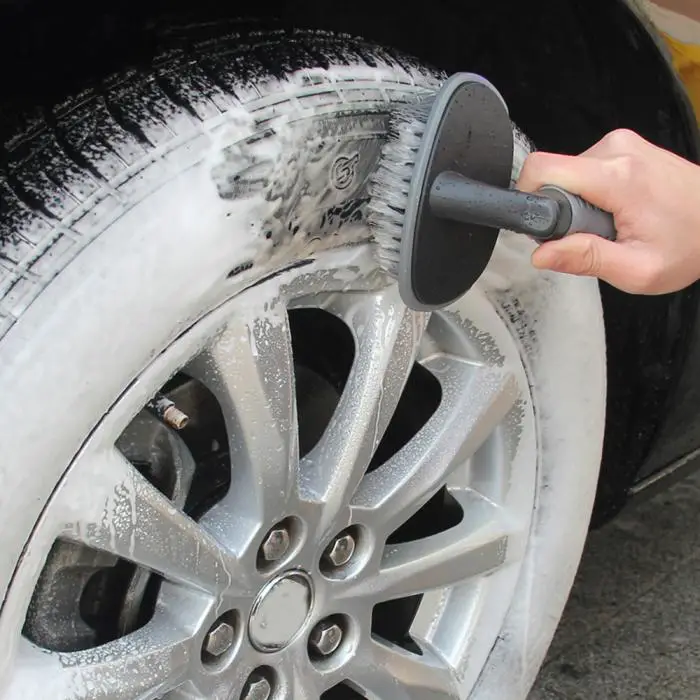
Light enduros do not have center stands. Therefore, to remove the wheel, you can lean the motorcycle on a stump or bump. If they don't, no problem. We find a clearing more evenly, close the gas valve and lay the motorcycle on its side so that the axle is pulled up. If you're looking after a motorcycle, the axle comes out easily. But woe to those who are lazy! If the axle is rusted to the spacer bushings (or inner rings of bearings), you can't get it out of there without kerosene (WD-40) and a decent-sized mallet.
It is important not to mix up the bushings (they are not the same everywhere) and not to stain them.
It is important not to mix up the bushings (they are not the same everywhere) and not to stain them.
If a large nail does not stick out of the wheel, the search for a puncture should be postponed. We put the wheel with an asterisk on the underlying fabric (or with a rim - but not with knitting needles! - on two logs) so that dirt and sand do not get into the bearings. We unscrew the “shoe” fastening nut (if any), press on the bolt so that the “shoe” moves away from the edges, loosen the nipple. Now you need to press the tire from the rim. The longer a tire has not been changed, the harder it is to do so. We boldly step with the heel of the motorboat on the sidewall closer to the rim and ... bounce.
We put the wheel with an asterisk on the underlying fabric (or with a rim - but not with knitting needles! - on two logs) so that dirt and sand do not get into the bearings. We unscrew the “shoe” fastening nut (if any), press on the bolt so that the “shoe” moves away from the edges, loosen the nipple. Now you need to press the tire from the rim. The longer a tire has not been changed, the harder it is to do so. We boldly step with the heel of the motorboat on the sidewall closer to the rim and ... bounce.
If a large nail is not sticking out of the wheel, the search for a puncture should be postponed. We put the wheel with an asterisk on the underlying fabric (or with a rim - but not with knitting needles! - on two logs) so that dirt and sand do not get into the bearings. We unscrew the “shoe” fastening nut (if any), press on the bolt so that the “shoe” moves away from the edges, loosen the nipple. Now you need to press the tire from the rim. The longer a tire has not been changed, the harder it is to do so. We boldly step with the heel of the motorboat on the sidewall closer to the rim and ... bounce.
We boldly step with the heel of the motorboat on the sidewall closer to the rim and ... bounce.
Sooner or later the tire will come off. (Sometimes the sprocket is far enough away from the edge of the rim and does not allow you to firmly press the wheel to the ground. In this case, you can put the edge of the wheel on the motorcycle swingarm, using it as a stop.) Now we need to squeeze both tire beads so that they dive into the recess in rim. This makes it much easier to remove the opposite side of the bead from the rim.
Here and below, in the green frame - the correct position, in the red - incorrect.
Here and below in the green frame - the correct position, in the red - incorrect.
We begin to remove the tire bead from the nipple so as not to damage the rubber around it by the tire bead (yes, it will not drown properly at the nipple). If the edge of the tire cannot be pulled over the bead, then the opposite edges have not fully entered the recess.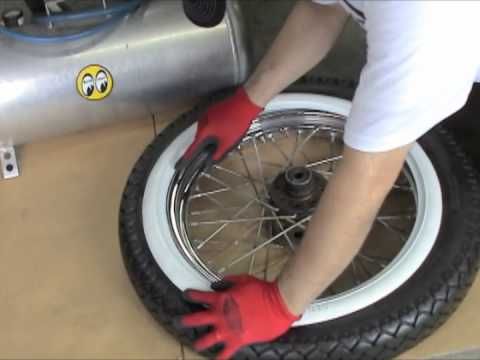
We start the first mount under the tire, hook the edge, turn it out.
We start the first pry bar under the tire, hook the edge, turn it out.
Now, if the length of the mount allows, we bring its rear part under the brake disc. If the mount is short, you will have to hold it with your knee.
Now, if the length of the mount allows, we bring its rear part under the brake disc. If the mount is short, you will have to hold it with your knee.
Then, with the second mount, we sequentially pull out the edge of the tire.
Then, using the second pry bar, pull out the edge of the tire in sequence.
After one side of the tire is completely removed from the rim, you can remove the tube.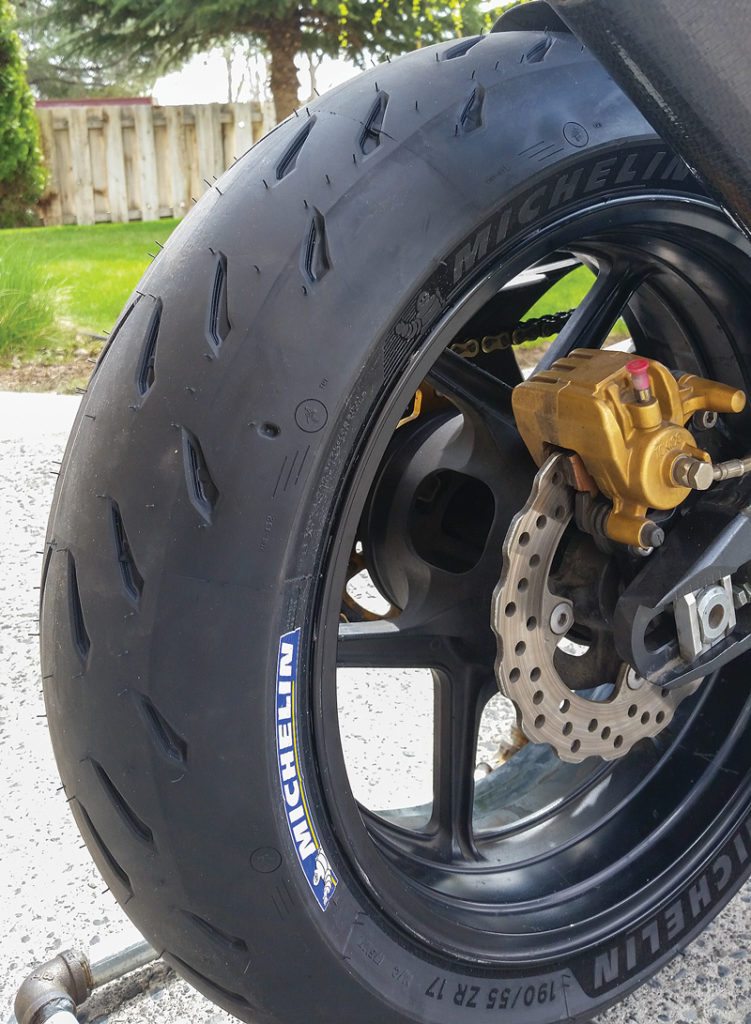 It is worth noting which side it was installed inside the tire.
It is worth noting which side it was installed inside the tire.
Once one side of the tire has been completely removed from the rim, the inner tube can be removed. It is worth noting which side it was installed inside the tire.
After examining the chamber, we find a puncture.
After examining the chamber, we find a puncture.
When removing a nail or a screw from a tire, it is important not to injure yourself. To make it easier to find tire damage, we combine the chamber nipple with the hole in the rim.
When removing a nail or a screw from a tire, it is important not to injure yourself. To make it easier to find tire damage, we combine the chamber nipple with the hole in the rim.
Sometimes sticking out ends of the spokes or burrs on their nipples are the culprit for a puncture. This usually happens when the special rubber seal is torn or dislodged, exposing the spokes. If we put a regular patch on rubber glue, we cut it out with an allowance of 15–20 mm from a puncture. We sand the camera and the patch, degrease it (with gasoline or glue, removing the dried layer), apply a thin layer of glue, dry for 5-10 minutes, and then press with all our might (you can even wash it with a motorboat) - you're done! If the camera is rubbed against a defect in the tire, during installation we put a piece of an unnecessary camera there. It’s enough to get home, but it’s better to throw away such a tire.
If we put a regular patch on rubber glue, we cut it out with an allowance of 15–20 mm from a puncture. We sand the camera and the patch, degrease it (with gasoline or glue, removing the dried layer), apply a thin layer of glue, dry for 5-10 minutes, and then press with all our might (you can even wash it with a motorboat) - you're done! If the camera is rubbed against a defect in the tire, during installation we put a piece of an unnecessary camera there. It’s enough to get home, but it’s better to throw away such a tire.
Before inserting the tube into the wheel, it must be slightly inflated.
Before inserting the inner tube into the wheel, it must be slightly inflated.
This will help the camera to correctly orient itself inside the tire and reduce the likelihood of hooking and tearing it with a mount or squeezing it with a “shoe”.
This will help the tube to properly orient itself inside the tire and reduce the chances of it getting caught and torn by the pry bar or squeezed by the “shoe”.
Having installed the nipple in the hole, screw the outer nut onto it without tightening it.
After installing the nipple in the hole, screw the outer nut onto it without tightening it.
Let's help the camera lie down inside the rim by adjusting it with your fingers. The edges of the chamber must not stick out.
Let's help the camera lie down inside the rim by adjusting it with your fingers. The edges of the chamber must not stick out.
Now you can insert the tire bead - first with your knee, then with a pry bar, with a small step.
The tire bead can now be inserted, first with the knee, then with the pry bar, in small increments.
It is very important not to “bite” the camera when working with mounts. To do this, only grip the edge of the tire and never raise the mount more than 90°.
It is very important not to “bite” the camera when working with mounts. To do this, you need to grab only the edge of the tire and never raise the mount more than 90°.
We finish the installation again at the nipple.
We finish the installation again at the nipple.
Since the rubber is thicker in the nipple area, the tube in this place can get under the edges of the tire. If the nipple pin does not go inside the wheel, then this is what happened. After making sure that the chamber lies freely inside the tire, we inflate the wheel. If the tire does not adhere to the rim in some place, it is better not to be too lazy to check the assembly once again. After all, we don’t have a second spare chamber with us ... Well, the tire holds pressure.
If the tire does not adhere to the rim in some place, it is better not to be too lazy to check the assembly once again. After all, we don’t have a second spare chamber with us ... Well, the tire holds pressure.
It remains to install the wheel - and go!
It remains to install the wheel - and go!
Roadside repair
Roadside repair
Tuning spreads along the roads of Russia at the speed of lava after the eruption of Vesuvius.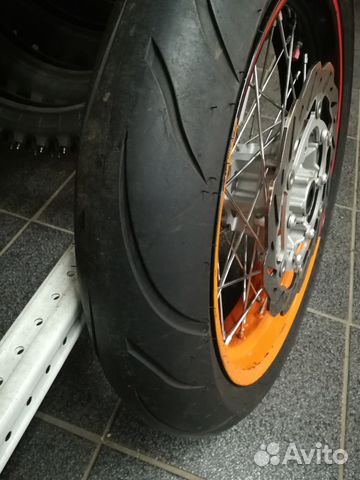 Thousands of official dealers, network services and garage workshops will willingly take on the transformation of a car, whether it is a domestic “classic” at the price of a TV or a premium sedan that costs the price of a good apartment in the capital. Hundreds of exhibitions, festivals and competitions are held annually throughout the country. But does all this mean that there are no "white spots" on the tuning map? No. Now we will talk about a popular phenomenon, which, nevertheless, still raises many questions - tire preload, or stretch.
Thousands of official dealers, network services and garage workshops will willingly take on the transformation of a car, whether it is a domestic “classic” at the price of a TV or a premium sedan that costs the price of a good apartment in the capital. Hundreds of exhibitions, festivals and competitions are held annually throughout the country. But does all this mean that there are no "white spots" on the tuning map? No. Now we will talk about a popular phenomenon, which, nevertheless, still raises many questions - tire preload, or stretch.
The word "stretch" is a Russian transcription of the English stretch - "pull", and is pronounced similarly. The common spelling "stretch" is a misnomer. Simply put, rubber is a “house” when a tire of a smaller width is put on a disk than is calculated by the manufacturer. For example, a 195mm tire instead of a 255 on a 9" wide rim. This is achieved by tensioning the sidewalls of the tire, the so-called profile. Now the profile is not perpendicular to the contact patch, but is at an obtuse angle.
Now the profile is not perpendicular to the contact patch, but is at an obtuse angle.
How blunt is determined by the amount of interference, and it, in turn, depends on several factors: the difference in the width of the disk and tire, the height of the profile, the tire manufacturer and a number of others, but more on that later. In most cases, when stretching, the inner and outer edges of the disc bulge outward. Now that you associate the word "stretch" with more than just jeans, it's time to answer the main question.
Depending on the area of use, the answer to this question will be different. Below is a complete list of the "pros" and "cons" of stretch, now we will talk about primary sources. Historically, the method of stretching narrow tires on a wide disk appeared almost simultaneously in Germany and Japan at the end of the last century. But if in the east the cause was drift , then in the old world it was legislation, or rather attempts to get around it.
But if in the east the cause was drift , then in the old world it was legislation, or rather attempts to get around it.
In Germany and Belgium, the law prohibits the operation of cars if the contact patch is outside the arches - this left no choice for lovers of a wide gauge. By pushing the disc out of the fenders, the stretch allowed the tire to stay inside and everyone was happy. As for drifting, the tension is appropriate here for several reasons: a narrow tire is easier to break into a skid, it costs less, and due to the “house” it breaks less under lateral loads that occur in sliding.
Decades later, all the reasons were intertwined, and now light stretch can be found even on some cars coming off the assembly line, such as the Infiniti Q60, but it was most widely used in the stens style.
In order not to get confused, it's time to put together all the terms related to stretch. "Stens" (from English stance - "landing", "posture", "posture") is a style in which stretch is used in most cases. According to his canons, the car should be pressed to the ground as much as possible, and the wheels to the arches. The latter has its own name - “fitment” and denotes the relative position of the disk, tire and wheel arch, or fender (wheel arch extension).
"Stens" (from English stance - "landing", "posture", "posture") is a style in which stretch is used in most cases. According to his canons, the car should be pressed to the ground as much as possible, and the wheels to the arches. The latter has its own name - “fitment” and denotes the relative position of the disk, tire and wheel arch, or fender (wheel arch extension).
Such a fitment is considered ideal when the edge of the wheel arch is in the gap formed during a strong stretch - it is called a poke. The latter is often possible only when using an air suspension, which allows you to raise the car while driving, saving the arches from contact with the disk. Examples of a static, that is, without height adjustment, fitment are distinguished by a larger “rim gap” (rim gap is the distance from the edge of the disk to the wheel arch). Due to the operation of the suspension, the rim gap of a static car can range from a few millimeters (with an extremely stiff suspension) to five centimeters. In any case, the stronger the tightness, the more likely it is to secure the wheel arch and achieve a better appearance.
In any case, the stronger the tightness, the more likely it is to secure the wheel arch and achieve a better appearance.
Let's say you've made the decision to stretch. What is needed for this? First, define your goals. If this is drifting or another sports discipline in which handling is at the forefront, then you should start by looking for tires in the right parameters, after which the required disk width will become clear.
Example: for track days, tires of dimension 225/40 R18 are selected, the recommended wheel width for which is 7.5 inches. Increasing the width of the disk by an inch, we get a slight tightness, and by two or three - a strong one.
On the contrary - if the appearance is more important than driving characteristics, then we are looking for discs of the maximum width that the wheel arches can accommodate.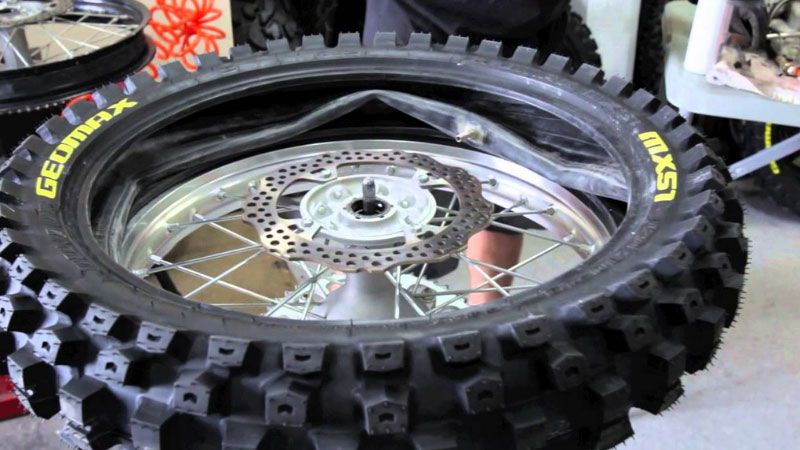 Suppose it is 10 inches in the seventeenth diameter. It is recommended to install tires of at least 275 millimeters on them, which means that a width of 245 or less is suitable for stretch.
Suppose it is 10 inches in the seventeenth diameter. It is recommended to install tires of at least 275 millimeters on them, which means that a width of 245 or less is suitable for stretch.
It should be borne in mind that the height of the tire profile has an almost stronger effect on the ability to preload than its width. Low-profile tires have stiffer sidewalls, which make them harder to stretch, but give more effective stretch compared to 50% or more profile height.
In order to understand the variety of sizes, enthusiasts create entire photo libraries, the most popular of which is tyrestretch.com. The name that speaks for itself will allow you to decide on the size and model of tires without resorting to experiments - hundreds of people have already tried different combinations. But even in spite of this, the choice can turn into an epic: tires of the same marking, but from different companies, can differ markedly in size, composition and characteristics. Decided? Buy.
Decided? Buy.
Alas, the purchase of stretch wheels is no less “exciting” than the choice. Let's start with disks - it's easier with them. The only defining parameter here is the width. There is also a departure, but it has nothing to do with tightness, so we will not dwell on it. The rest is determined by personal preferences and budget: stampings or forged composites, new or used, ready-made version or "custom" in a single copy.
With tires it is more difficult, and even if we are talking about new ones. The fact is that “new” often means opposite things: produced a few months ago or never put on wheels. The latter may be ten years old - despite the fact that the shelf life of car tires is five years. Information about the production date is located on the sidewall of the tire and consists of four digits, the first two of which are the week of manufacture, and the second are the year.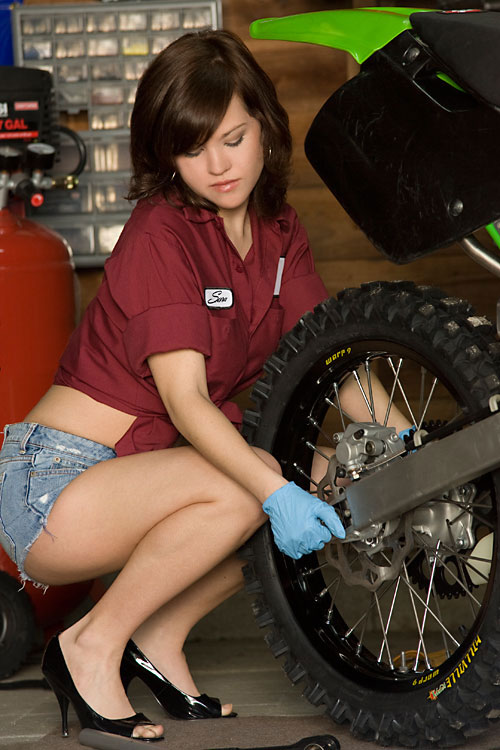
If for some reason the choice falls on used tires, among other things, you need to pay attention to the condition of the toe - this is the inside of the bead. It should be free of cuts and cracks, as it ensures the tightness of the "stretched" tire. Without stretch, damage to the toe is not critical, because the tire is adjacent to the disk with the entire plane of the bead. You should also pay attention to the geometry of the inner ring - its curvature due to improper storage will prevent you from pulling a narrow tire on a wide rim. Finally, when everything is bought, the most interesting thing lies ahead.
It is better to assemble wheels where they have experience in explosion and installation of non-standard sizes. If you do not approach the choice of a tire shop carefully, at best you risk simply not putting the tire on the rim, and at worst - damaging both. Let us focus only on the pumping procedure, because the rest of the actions do not differ from ordinary tire fitting.
Let us focus only on the pumping procedure, because the rest of the actions do not differ from ordinary tire fitting.
The problem here is that the tire will take the desired stretched position only at high internal pressure (from 3 to 15 atmospheres). The narrow size of the tire prevents such pressure from being generated. Humps (sides on the disk that do not allow the tire to get off inward) are located far from the tire beads, therefore, you have to resort to various non-standard methods.
There are two options: seal the missing space with an auxiliary chamber or resort to an explosion. The second option is simpler and more technologically advanced. He, in turn, has two methods: explosive pumping (booster) and setting fire to a flammable liquid. In the first case, air is pumped into a cylindrical receiver with a volume of about 20 liters, after opening the valve of which, within a tenth of a second, it enters the tire, inflating it.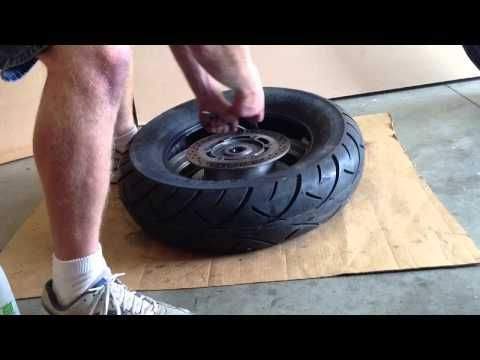 When ignited, high pressure is created by the expansion of instantly heated air. Gasoline (or another flammable liquid) is applied to the entire circumference of the inner rim of the disk and set on fire with a torch. At the same time, air is supplied through the nipple, which does not allow the tire to jump back to its original position after the explosion. After the tire has taken the desired position on the rim of the disk, the operating pressure is set from 2.5 to 4 atmospheres.
When ignited, high pressure is created by the expansion of instantly heated air. Gasoline (or another flammable liquid) is applied to the entire circumference of the inner rim of the disk and set on fire with a torch. At the same time, air is supplied through the nipple, which does not allow the tire to jump back to its original position after the explosion. After the tire has taken the desired position on the rim of the disk, the operating pressure is set from 2.5 to 4 atmospheres.
+ less tendency to break under lateral loads
+ the ability to take out the disks from the wheel arches while maintaining the track
+ reduction of the height of the profile when preloaded
+ lower cost of narrow tires compared to wide
+ the ability to lower the car more
+ visual enlargement of the disk
- lack of protection of disks from curbs
— high requirements for the condition of tires
- Less ride comfort
- more labor-intensive installation procedure
- high probability of disassembly in case of pressure loss
- increased load on the tire profile
practice
Articles / Popular questions I drove around a pit or an obstacle through a solid one: can they deprive me of my rights? Driving into the oncoming lane through a solid one is always a violation.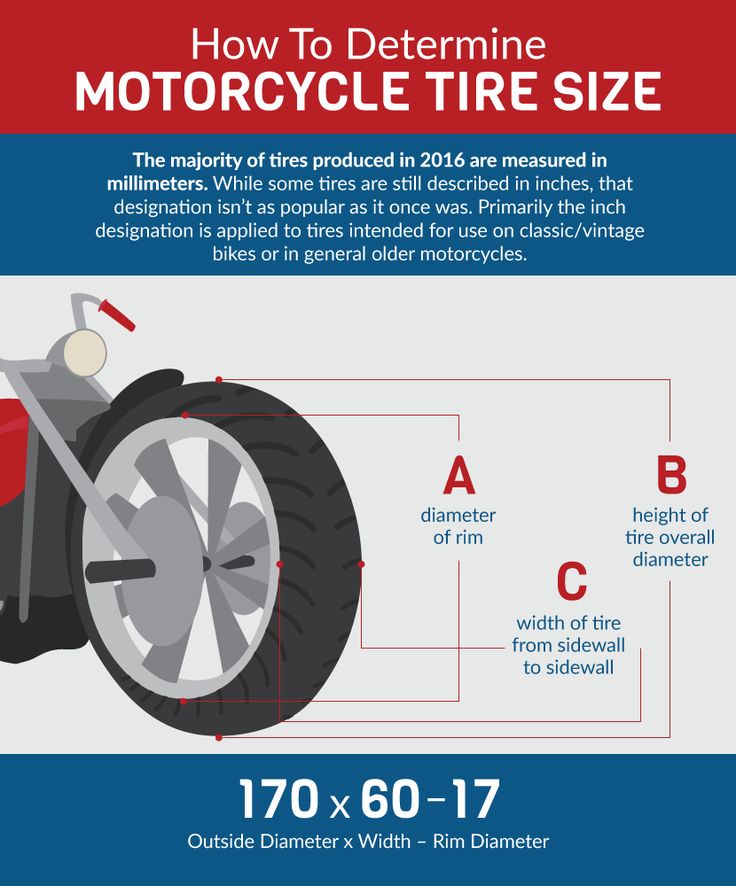 But the punishment for it still varies greatly depending on the circumstances. Let's take a look at one of the most common... 863 0 one 11/14/2022
But the punishment for it still varies greatly depending on the circumstances. Let's take a look at one of the most common... 863 0 one 11/14/2022
Articles / Tests Ninety-nine secrets: check what you know about the VAZ-21099 Some thirty years ago, the VAZ-21099 was a symbol of prestige and a real dream car for residents of newly formed states that arose within the CIS on the wreckage of the very country in which ... 2432 eight 3 11/12/2022
Articles / Repair and maintenance Air filter index: Parts price pullback, no shortages and a flurry of fakes The ruble exchange rate has stabilized in recent months at a relatively comfortable level for importers.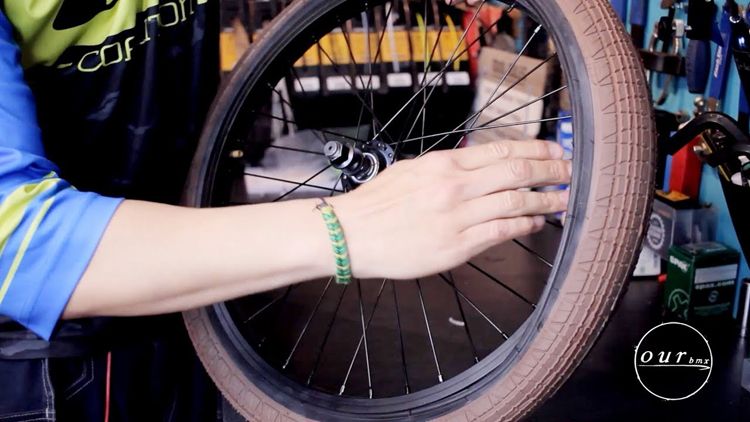 Did prices for spare parts and consumables follow? In general, yes, and the prices for some... 1974 2 one 09.11.2022
Did prices for spare parts and consumables follow? In general, yes, and the prices for some... 1974 2 one 09.11.2022
Test drives / Test drive Haval Dargo vs Mitsubishi Outlander: the dog is barking, the stranger is coming In the Haval dealership in the south of Moscow, life is in full swing: buyers look at cars, communicate with managers and sign some papers. While I was waiting for the test Dargo, the same cross... 16192 7 205 13.09.2022
Test drives / Test drive Motor from Mercedes, emblem from Renault, assembly from Dacia: test drive of the European Logan 1.